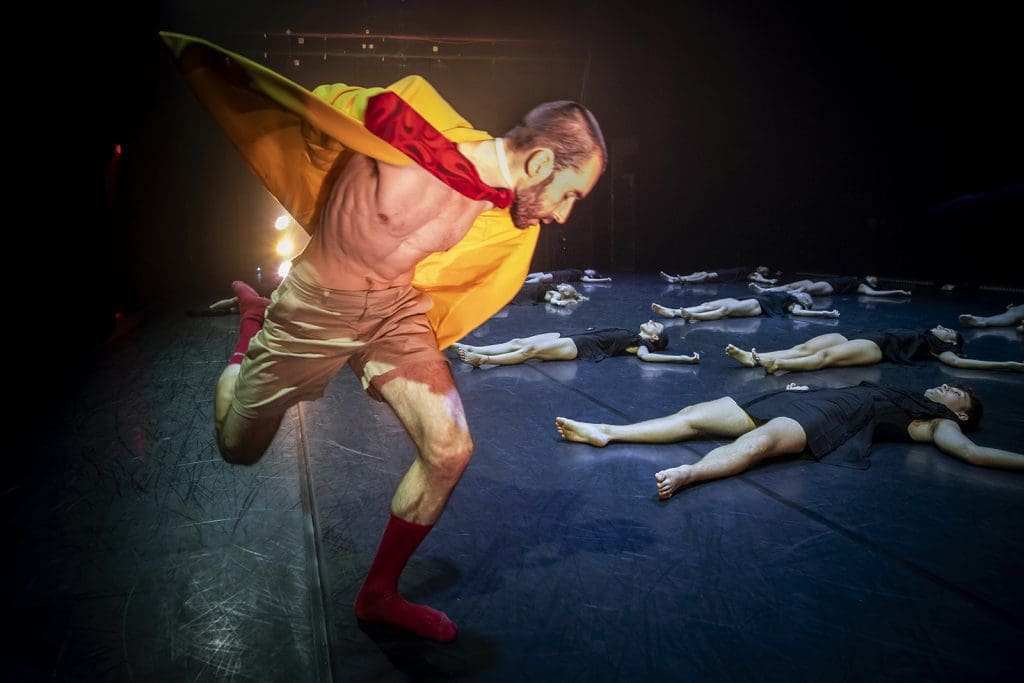Rami Be'er's new creation Ta'atua is a multi-textural dance work that plays on two tracks; the contemporary dance and the dance-theater genre. The latter, enable the work to present quite a few enigmatic elements which lead the dancers through poetic philosophy pastures as Be'er choose to quote Hanoch Levin's texts which contains child-like innocent perceptions on life, along profound understanding of social complexity.

On the other channel the strong cast of 16 performers helped to maintain a matching measure of explosive energy and restraint, discipline and cutting loose force. They gave a vivid performance that was loaded with intriguing contradictions and detailed compositions, much like early American patchwork quilts.
One element remained a powerful dilemma; how to fit smoothly the presence of a character that is dressed in oversize yellow jacket, red tie and sox like a comic cliché of a bygone image of a 'sales man' holding an old suitcase. He could hardly keep up with other dancers nor does he actually acts. He represented the outside, odd one out. He was constantly on stage, yet hardly promoted or affected major artistic moves.
At the ending scene a switch in the artistic process occurred. He turned towards the back screen, pulled it apart, revealed a strange set that seemed to be a ruined theater set with a small screen or picture of desolation, while a song played repeatedly- ' it's wonderful here, wonderful here…' along a loud siren.

In an enormous contrast, the post Corona group of dancers of the KCDC, were stronger than ever, with impressive cast with good technique. Be'er seems to enjoy challenging them with plenty of new materials. Many were loaded with spiced creativity. Particularly the group compositions that were filled with erupting energy which made the laying bodies jump in the air, or spring up like rising waves. For a split second, one's heat took a leap too. In a way the mixture between a well structured movements of the larger formations, adorned with solos and trios lit the stage before they rejoined the larger group and gave a strong rhythmic boost to the dance's architecture.
Yet my favorite miniature encounter was a short duet, where a couple stood apart, their hands spread sideways, like wings, and for no apparent trigger both leaned diagonally toward each other. This simple, precise change of positioned body crated a play of parallel lines of their limbs, and turned to be a totally unexpected experience of geometric esthetics giving birth to living sculpture in the making.